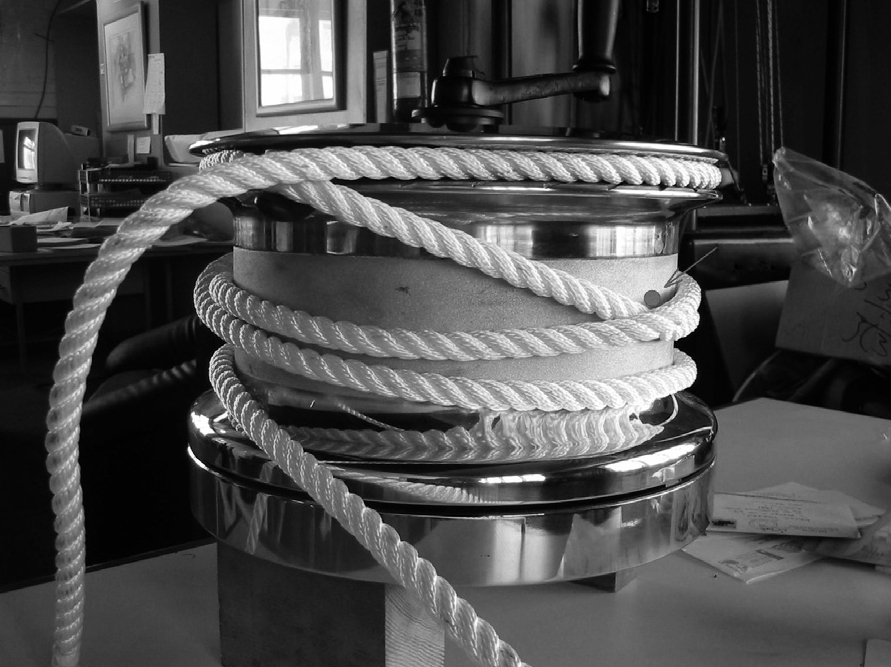Winches
Book Extract
In reality there are pros and cons concerning the positioning of the winch on deck related to the efficiency of the winch, but we can in any case take this suggestion as valid while bearing in mind that the working load of a winch must be respected in all positions for the winch on deck. Because it is true that, even if we position the pinion at a tangent to the first turn on the winch, we do not always respect this condition in all situations. If, for example, the pinion of a primary winch is positioned correctly for the number three genoa sheet and the spinnaker afterguy (which arrive from forward of the winch) it may not be right for the code zero sheets, which arrive at the winch from astern!
Look at Fig. 9.14: here the turns on the drum of a winch are fouled because the angle of entry of the line is incorrect (the white line is almost horizontal with relation to the winch). The sheet should enter the winch at an angle of about 5º to 8º with respect to the base of the winch.

It is important that the pinion that meshes with the ring gear of the drum is at a tangent to the line formed by the sheet as it enters the winch.

The correct angle of entry is between 5º and 8º; the positioning of the winch must take account of the position both of the pinion and of the first speed button, which must face in towards the cockpit.
Choosing a winch
How should we decide on a winch? First of all by comparison and through experience. If a 40 footer has always had a 48 winch and it has never given problems, you certainly cannot go wrong by staying with that size!

An overlapping turn on the winch drum caused by an incorrect angle of entry for the sheet.
Then a practical rule of thumb to decide quickly the size of a winch: on boats between 30 and 70 feet, add 13 to the length overall in feet and you will have the ideal power ratio for the primary winches.
A more sophisticated method is to calculate the maximum working load on the sheet the winch will be used for and choose a winch with a suitable working load. The working loads of winches can be obtained from suppliers. Here too, as with purchases, pay attention to the difference between the maximum sustainable working load (that will not damage the winch while it’s still and not in operation)and the maximum operating working load (the most the winch can pull). For example, a winch may be able to pull 2000 kg with no problems but also have a static working load of 4000 kg under which – thanks to such elements as a machined19 support for the drum and the base – it may not work but will not suffer any permanent deformation.
Winch maintenance
A lot of mythology has been created around winch maintenance without coming to grips with the central issue, which is that it is not so much the grease or oil or the method of cleaning that are the key to the operation, but the fact that you carry it out at all! In fact, the basic problem of a winch is corrosion, which is caused by having a lot of different materials in contact with each other – what is more, in a marine environment.
Either you do as Barbarossa once did, which was to keep some models literally in an oil bath, or you need periodically to take your winches apart, put all the parts in a basin full of diesel oil, clean them with a brush, dry them with a rag that does not lose fluff, reassemble them and lubricate them with a thin film of grease spread on with a brush and not with your fingers (otherwise you will use too much), lubricating the pawls only with oil and never with grease. Use good quality machine tool oil or that for weapons, and good-quality grease for marine use.

Barbarossa oil bath winch.
© Not to be reproduced without written permission from Fernhurst Books Limited.
Rigging is written by Danilo Fabbroni. Danilo Fabbroni is an internationally renowned rigger with Harken, the leading global manufacturer of rigging equipment. He travels the world rigging superyachts.